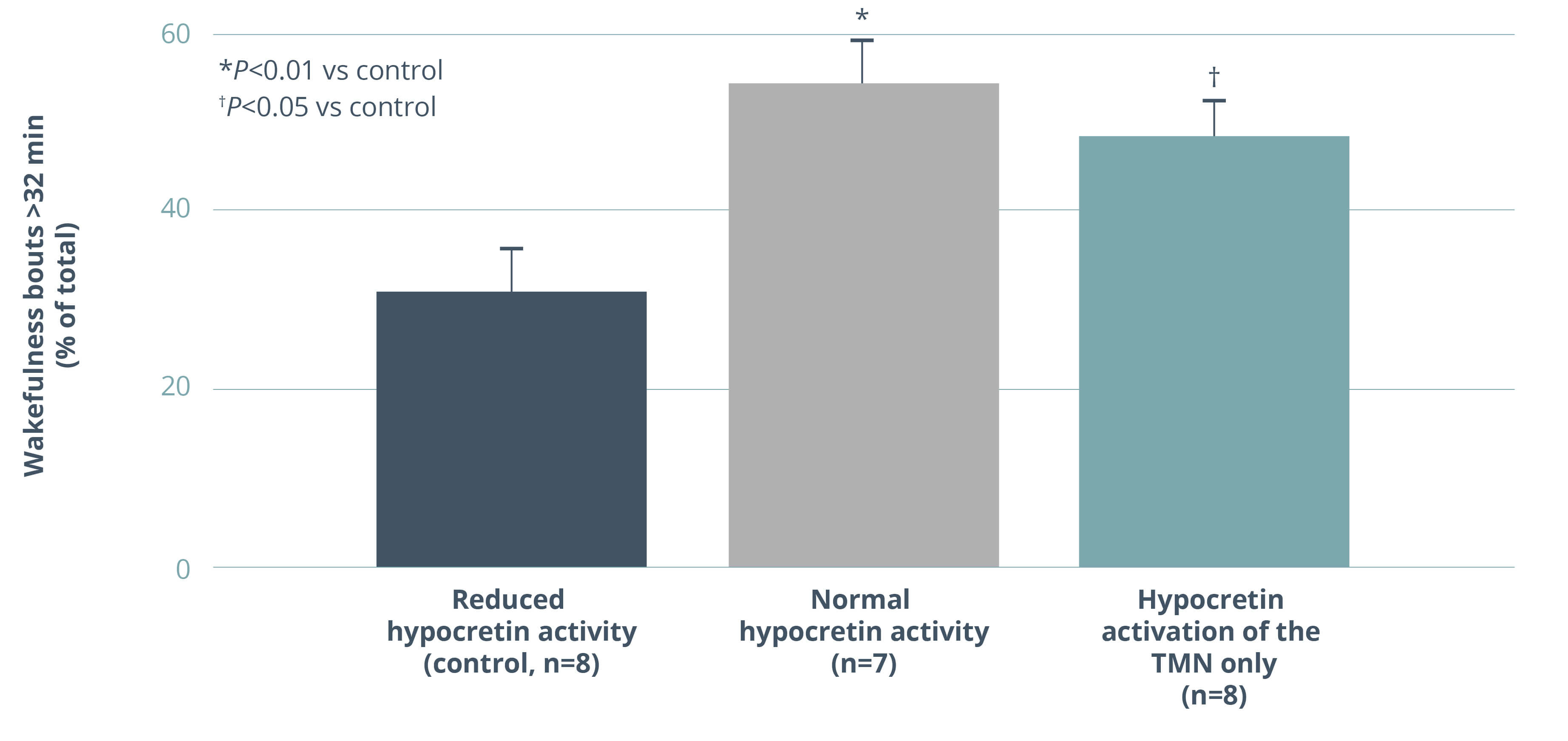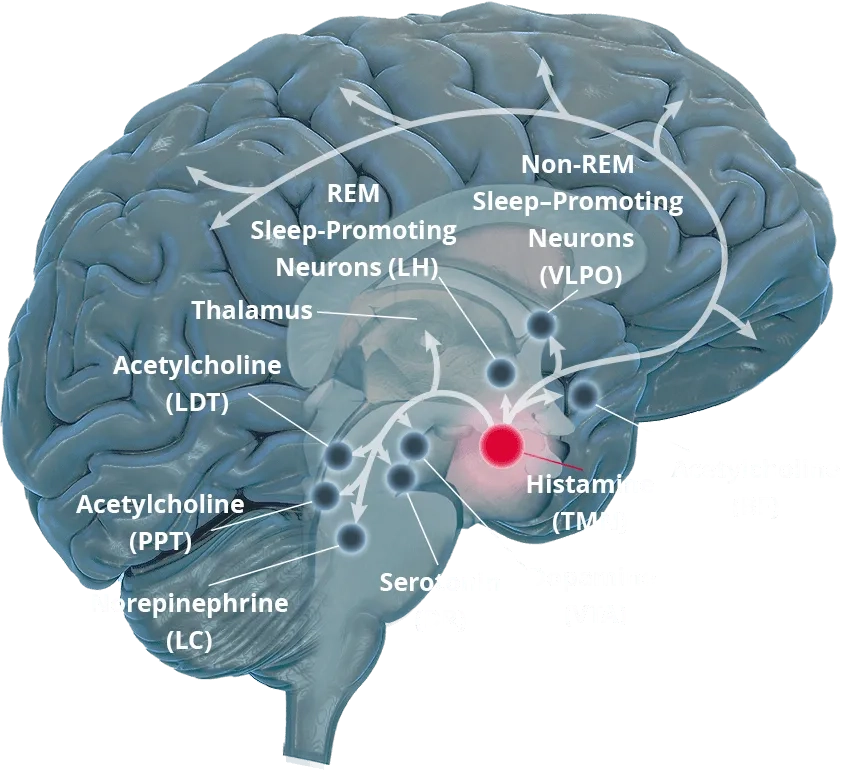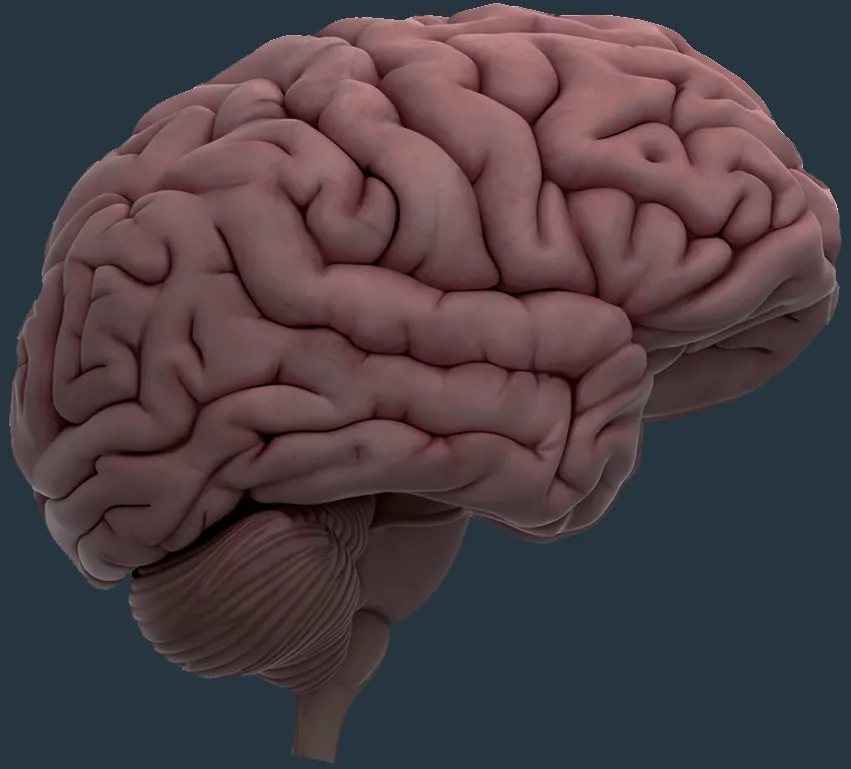There's  to Know
to Know
Explore the actions of different wake-promoting neurons in the brain, and learn about discoveries that show there’s more to know about sleep, wakefulness, and narcolepsy. Move the slider on the brain to the left and right to reveal neuronal pathways.
Histamine Neuronal Pathways1-6
Histamine Neurons:
What You May Know
Histamine is a neurotransmitter that plays an important role in stabilizing sleep-wake states.1
But did you know...
Histamine neurons in the TMN may be important for sustaining wakefulness for long periods during the day?7
BF, basal forebrain; DR, dorsal raphe; LC, locus coeruleus; LDT, laterodorsal tegmentum; LH, lateral hypothalamus; PPT, pedunculopontine tegmentum; TMN, tuberomammillary nucleus; VLPO, ventrolateral preoptic area; VTA, ventral tegmental area.
Histamine Neurons May Play a Key Role in the Wake-Stabilizing Effects of Hypocretin7
In an animal model of narcolepsy, reduced hypocretin activity throughout the brain led to fragmented wakefulness.7 When hypocretin activation was restored to only neurons in the TMN (the location of histamine neurons in the brain3), long bouts of wakefulness were significantly increased compared with controls and were similar to mice with normal hypocretin activity.7
Activation of Histamine Neurons by Hypocretin Stabilized
Wakefulness in an Animal Model of Narcolepsy7

In a mouse model, hypocretin activity was reduced by disrupting expression of the hypocretin receptor type 2 (HCRTR2). Local expression of HCRTR2 in the TMN was induced by microinjection of an adeno-associated viral vector (AAV) coding for Cre recombinase. Wakefulness was scored in 10-s epochs and bouts were characterized during the animals’ normal active period (7:00 PM to 7:00 AM).7
References
- Scammell TE, Jackson AC, Franks NP, Wisden W, Dauvilliers Y. Histamine: neural circuits and new medications. Sleep. 2019;42(1): doi: 10.1093/sleep/zsy183
- Scammell TE, Arrigoni E, Lipton JO. Neural circuitry of wakefulness and sleep. Neuron. 2017;93(4):747-765.
- Haas H, Sergeeva OA, Selbach O. Histamine in the nervous system. Physiol Rev. 2008;88:1183-1241.
- Thorpy MJ, Bogan RK. Update on the pharmacologic management of narcolepsy: mechanisms of action and clinical implications. Sleep Med. 2020;68:97-109.
- España RA, Scammell TE. Sleep neurobiology from a clinical perspective. Sleep. 2011;34(7):845-858.
- Saper CB, Scammell TE, Lu J. Hypothalamic regulation of sleep and circadian rhythms. Nature. 2005;437(7063):1257-1263.
- Mochizuki T, Arrigonia E, Marcus JN, et al. Orexin receptor 2 expression in the posterior hypothalamus rescues sleepiness in narcoleptic mice. Proc Natl Acad Sci. 2011;108(11):4471-4476.

